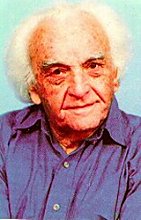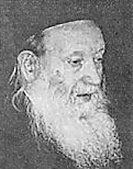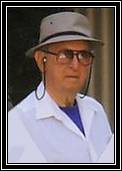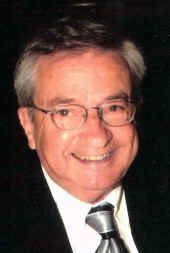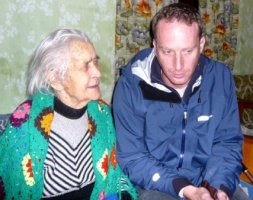
In Memoriam |
| There are those who are Kupishokers or their descendants
whose contributions to their community transcend the ordinary.
Starting with 2000, there will be brief obituaries with
photographs in chronological order of Kupishokers of note that will be
added to this page.
The first five will be Shlomo Kodesh, Rabbi Ephraim Oshry, Stanley Mayersohn, Norman Meyer and Veronika Sadkeviciene. The fifth person, Veronika Sadkeviciene, while not Jewish, was a resident of Kupiskis who lovingly remembered the Jewish community. In order to ensure that this process continues in an orderly fashion, the family of the deceased should contact Ann Rabinowitz. It is hoped that this will then initiate the process to notify the Kupiskis SIG membership and the Gansa Mishpocha group followed by the creation of the obituary with accompanying photograph on this site. May the memory of these Kupishokers be blessed. “Yehi Zichram Baruch.” |
![]()
|
Shlomo Kodesh |
Dr.
Shlomo Kodesh
was born 1903 in One
of Israel's foremost language educators, he was generally regarded as
the prime architect or "grandfather" of the Ulpan movement,
the unique system of teaching Hebrew to the foreign-born that won the
admiration of linguists throughout the world.
His literary works embrace many areas including fifty books
covering textbooks for children and adults, children's literature, and
guidebooks for teachers. |
![]()
|
Rabbi
Ephraim Oshry, noted Lithuanian rabbinical scholar, born in Kupiskis
in 1914, the son of Dov Ber “Berel” Oshry and Chaya Kagan, was the
leader for 50 years of the landmark synagogue Beth Hamedrash Hagadol, on
the Lower East Side of New York, and venerated among Orthodox Jews as a
sage of the Torah and author of a five-volume religious response to the
Holocaust, died on September 28, 2003 at the age of 89. During World War II, he was appointed by the Nazis as keeper of a warehouse of Jewish books being stored for an exhibit of "artifacts of the extinct Jewish race", but used the books to hold secret worship services. His notes on the religious response to the Holocaust, written in Hebrew on bits of paper, were buried and retrieved after the War and eventually published in Hebrew in five volumes. One of the volumes, published in English in 1989, won the National Jewish Book Award for best book on the Holocaust and was entitled Responsa from the Holocaust. It is not only of great religious, but historical importance as well.
In
addition to these works, he is best known in English for his work The
Annihilation of Lithuanian Jewry, published in 1995, translated from
his Yiddish work Khurbn Lita. It details the end of the
Kovno Ghetto and records the fate of forty-seven other Jewish shtetls
including that of Kupiskis. This book is used as a primary source
by most Jewish family researchers. He was also interviewed by
Anschel Strauss whose Gafanowitz family came from Kupiskis about the minhagim
or tenets that Kupishokers followed in everyday life. He was
revered for the influence of his character on succeeding generations of
the congregation as much as for his scholarship. “He was known as a
Posek, a term bestowed on a man whom people can ask the difficult
questions of life,” said Victor B. Zybernagel, a member of
Congregation Beth Hamedrash Hagadol at Rabbi Oshry
studied with the great rabbis of the day. He was interned in a
concentration camp near He and his
wife left For
several years Rabbi Oshry ran two yeshivas, one for boys and the other
for girls, in the |
Rabbi Ephraim Oshry |
![]()
|
Stanley Mayersohn |
Stanley Hillel Mayersohn
was born on |
![]()
|
Norman Meyer
His
accomplishments in the Jewish world included involvement in the Habonim
Zionist Youth Movement and Machon Horef in the 1950’s. He was a
passionate Zionist with particular concern for Jewish education.
As a lay leader, he was instrumental in the establishment of the
Theodor Herzl School in Port Elizabeth, SA, as Bursar, he ensured the
fiscal health of the Herzlia School in Cape Town, SA, and, finally, as
the Director of Development, he was involved with the construction of
the second campus of the Charles E. Smith Jewish Day School in In
addition, |
Norman Meyer |
![]()
|
Veronica Sadkeviciene |
Veronika Sadkeviciene was born in 1916 in Kupiskis and worked as a nursemaid in the household of Beno-Leizer Meyerowitz and his wife Base-Dveira Rabinowitz. Although a non-Jew, she learned to sing Yiddish lullabyes. In this photo, she is doing just that with Robin Esrock during his visit to Kupiskis in October, 2007. Veronika passed away November 14, 2007, one of the last of the memory-keepers of the Jewish community.
|
